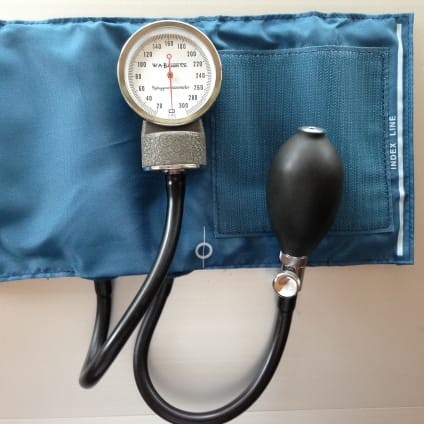
How To Track Your Fitness Progress
Physical fitness is a major contributor to a high quality of life. So if you train hard on the best home gym equipment, how do you measure progress? Fitness enables you to carry out your daily activities, play sports and also feel as well as look good. It's highly recommended that everyone engages in regular physical activity in order to reap its numerous health benefits. However, committing to a fitness program is usually not as easy as it sounds.
A lot of people who start a fitness program often find it difficult to maintain. One of the best ways to tackle this problem is to keep track of your progress. Without this crucial process, there is no way of knowing whether your chosen fitness regime is producing results. Seeing results clearly can help you to stay on track.
Do Fitness Trackers Really Work? [Video]
Fitness Tracking : The Basics
1. Understand The Meaning Of Physical Fitness
Many of us probably throw the term fitness around without fully contemplating on its meaning in regards to your body. Knowing what is entailed in physical fitness will enable you to ascertain whether progress is being made and is key to all methods of measuring fitness.
Physical fitness has three major components:
- Cardiorespiratory fitness
- Muscular strength/endurance
- Muscular flexibility
Cardiopulmonary or cardiorespiratory fitness is derived from having your heart, blood vessels, and lungs operate at a high level of efficiency.
Muscular strength and muscular endurance is your muscles’ ability to exert strong forces and sustain those forces over a long period.
Muscular flexibility refers to your body’s ability to move easily through a range of motions.
All three aspects must be analyzed in light of your chosen exercise program. Note that when you examine these three ingredients, you can readily see that the recreational sports popularly enjoyed do not give sufficient exercise.
2. Inspect Your Heart Rate
The heart rate (pulse) is one of the best indicators of progress in physical fitness. One simple way to measure your heart rate is to check your heartbeats while your body is at rest before exercising, while exercising, after exercising and the time it takes to recover.

Taking pulse rate at rest can be a little tricky. Start by placing the tips of the index, second and third fingers on the palm side of the opposite wrist. Alternatively, you can place your index and second fingers on your neck until you can a pulse beneath them.
Using a stopwatch, note down how many beats you feel in 10 seconds then multiply this number by six to determine your pulse rate (heart beats per minute).
In order to measure your heart rate while exercising, you should invest in a pulse meter. For most people, if your resting pulse rate is above 75 – 80 beats a minute, it means thatyour heart is working overtime and therefore your fitness levels are low (inactive people fall in this category).
With the kind of conditioning that involves a balance of the three components of fitness, your heart will pump blood more efficiently and consequently the resting pulse will be lower. However, you should never attempt to over exercise in an effort to reduce these figures further than they should be.
The recommended (target) heart rate for endurance exercise should be between 70 and 85 per cent of your maximum heart rate (220 minus your age).
Your breathing and your pulse rate should return to normal within about 10 minutes after you have finished your exercise and as you get fitter these rates will lower.
For your heart to obtain the maximum benefit, your pulse rate during exercise should be within the recommended zone for about 20 minutes a day on at least three non-consecutive days a week.
If you exercise daily, alternate easy days with more strenuous days. It is advisable to keep an accurate record of this data throughout the duration of any exercise regime. Better yet, it should become part of your lifestyle.
3. Measure Your Blood Pressure
A measure of your systolic and diastolic blood pressure is a significant indicator of your cardiopulmonary fitness. You can measure your blood pressure with an automatic blood pressure monitor. You should do this when you begin your fitness program and throughout the regime.
The systolic blood pressure is the pressure that your heart generates when it contracts while the diastolic pressure is pressure generated as the heart relaxes.
The pressure levels are determined as indicated below;
- Systolic – Diastolic
- 90 – 60 (Borderline low)
- 110 – 75 (Low normal)
- 120 – 80 (Normal)
- 130 _85 (High Normal)
- 140 – 90 (Stage 1 HBP)
- 160 -100 (Stage 2 HBP)
- 180 -110 (Stage 3 HBP)
- 210 – 120 (Stage 4 HBP)
Your blood pressure should ideally fall in the 120 – 80 category as you get fitter. Some of the symptoms for low blood pressure are dizziness, tiredness and chronic fatigue while those of high blood pressure include stressfulness, bloating, weakness and lethargy.
You should consult with your physician to rule out any underlying conditions.
Measuring Fitness Progress [Video]
4. The Sit And Reach Test
One of the most popular and simplest ways to measure muscular flexibility is the sit and reach test. This test is commonly used since it measures the flexibility of the lower back.
Lower back pain is one of the more serious consequences of muscular unfitness affecting one in four people. You can use the sit and reach box (or a ruler held between your feet) to perform this test.
Note that you will require a tester, preferably a workout partner. After sufficient warm up, sit on the floor and stretch your legs straight ahead at shoulder-width. The soles of your feet should be flat against the box. Your tester will hold your knees flat on the floor.
With your hands placed on top of each other with palms facing downwards, bend forward along the measuring line (or ruler) as far as you can. This distance reached by your fingertips is measured after two tries. Your tester will record the score to the nearest centimeter or half-inch.
The official scale used places the 0 mark 9 inches before the feet. Those who can reach their feet will therefore have a flexibility score of 9. As you get fitter this score should gradually increase. Variations of such tests can be employed in various ways for other body parts.
There are numerous and varied methods that you can use to measure your fitness progress. They include but are not limited to breathing rate test, sit up and push up tests, body composition tests (lean mass to fat mass ratio), step and balance tests and the height/weight test (BMI).
5. The One Rep Max Test
A popular method to measure the maximal weight you can lidt for one repetition on a given exercise. Usually performed on large exercises such as Bench Press, Squat and Deadlift, it can be a useful measurement for determining what percentage of weight you should be lifting throughout your program as well as showing how much you have improved if performed at regular intervals throughout the year.
It is recommended only for the more advanced and injury free lifters and should always be performed under supervision of a professional.
Measuring Body Composition

If you’re training for fat loss or for building muscle, keeping track of your body's measurements is essential to avoid plateaus. There are many different ways to measure results some are more accurate than others:
Body Mass Index (BMI)
The basic measurement to see if you are of appropriate weight is BMI. This is a simple tool that uses the individual's weight and height to quantify their risk of health problems from being overweight.
Whilst this measurement is a generalisation is does work very well on the general population and can be a good tool to measure.
Hip To Waist Ratio
An excellent indicator of disease risk and a measurement of health. Those with larger waists are much more susceptible to Coronary Heart Disease and other life threatening disease. All it requires is a tape measure, making this a very convenient marker that can be tracked efficiently.
Body Fat Calipers
This method is usually performed by a qualified professional, using pincer type calipers they will gently pull the fat away from the muscle and measure its thickness. There is a variety of methods which can be used measuring various sites around the body some use 3 sites and others up to 12.
Fitness as a whole has to include nutrition and lifestyle, whilst you can track your physical attributes fairly easily; sleep, stress and calories for example can be a little more difficult.
Measuring Sleep
With the introduction of new technology this is becoming easier and easier, smartwatches and smartphones seem the most widely used. These offer information on sleep duration, quality and overall sleep performance. Sleep is one of the most important factors in health and fitness.
Measuring Stress
This can be a little more difficult as stress expresses itself in many different ways, but a good place to start is a mood diary. Your mood will vary due to sleep, exercise and meals; once you get to know how each of these effects these you can start trying to improve these.
Keep A Food Diary

The simple act of writing down and tracking what you eat can help you lose weight. This is because it gives your body a better understanding of how many calories you actually consume. Most people are surprised by how easily they can overeat without realising. If you would prefer to train and workout at home then take a look at all of our home gym equipment reviews, but remember to eat well. A diary will help you do that.
Add new comment